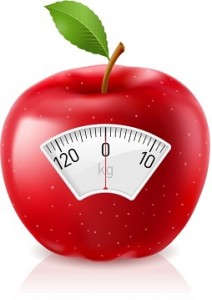 This article was submitted by the Baylor College Of Medicine…..please share your comments below…..
This article was submitted by the Baylor College Of Medicine…..please share your comments below…..
Diet and exercise typically comes down to common sense, but we don’t always want to believe it, according to Roberta Anding, registered dietitian with Baylor College of Medicine. Instead, we’re more likely to believe the sensationalized information or fads.
Anding breaks down some common myths for us and simplifies how to eat healthy:
Myth #1: I should eat more protein because of my new exercise program
Your intensity determines your nutritional need – whether you should add more protein to your diet depends on the intensity of your workouts, and most of us are not working out at that intensity to need additional protein than what is recommended for us.
Anding says to divide up your protein throughout the day, and especially be sure to combine protein with carbohydrates for breakfast to fuel you for the day and help you control your appetite all day long. A bagel and cream cheese is not the ideal breakfast – consider half a bagel with scrambled eggs. Don’t backload your protein at the end of the day – start adding protein with breakfast.
Myth #2: BMI is the best tool for goal setting
If you never work out, you may have a higher percent body fat, whether or not you are obese according to your BMI. This can put you at risk for sarcopenic obesity, a condition in which you are losing muscle mass and adding body fat. It is possible to be normal weight but metabolically obese. Anding says the best way to determine your percent body fat is to get a Bod Pod test done. This can tell you how much of your weight is lean weight and how much is not.
Myth #3: Eating healthy is confusing
One of the keys to eating healthy is to fill half of your plate with fruits and vegetables. Anding suggests if weight loss is your goal invest in smaller plates so that your portions are automatically smaller. Be sure to distinguish between a meal versus a snack. A snack for women should be less than 150 calories, and for a man should be less than 200 calories. To limit snack portions, put your snack on a plate rather than picking at food – this will hold you more accountable for your portion size.
Myth #4: Organic food will prevent chronic illness
There is no scientific data to support this. Eating a variety of colorful fruits and vegetables and focusing on a plant-based diet has been shown to prevent chronic illnesses. Consider purchasing a fruit and vegetable brush to wash your produce with before consuming it if you are worried about pesticides.
Myth #5: High fructose corn syrup is the reason for America’s weight crisis
 Compared to Americans in the 1970s, we now eat 500 calories more and exercise less. This is what’s contributing to the weight crisis. Americans eat too much sugar in all forms. The new Dietary Guidelines recommend limiting sugars. Focus on added sugars, not the natural sugar in milk or fruits.
Compared to Americans in the 1970s, we now eat 500 calories more and exercise less. This is what’s contributing to the weight crisis. Americans eat too much sugar in all forms. The new Dietary Guidelines recommend limiting sugars. Focus on added sugars, not the natural sugar in milk or fruits.
Myth #6: Muscle weighs more than fat
Muscle is more compact than fat, but one pound is one pound. Anding says that what you choose to put in your body is what makes all the difference. However, increasing your weight through adding muscle is advantageous. Increasing your muscle mass increases the amount of calories you burn at rest since the muscle is the metabolic engine.
